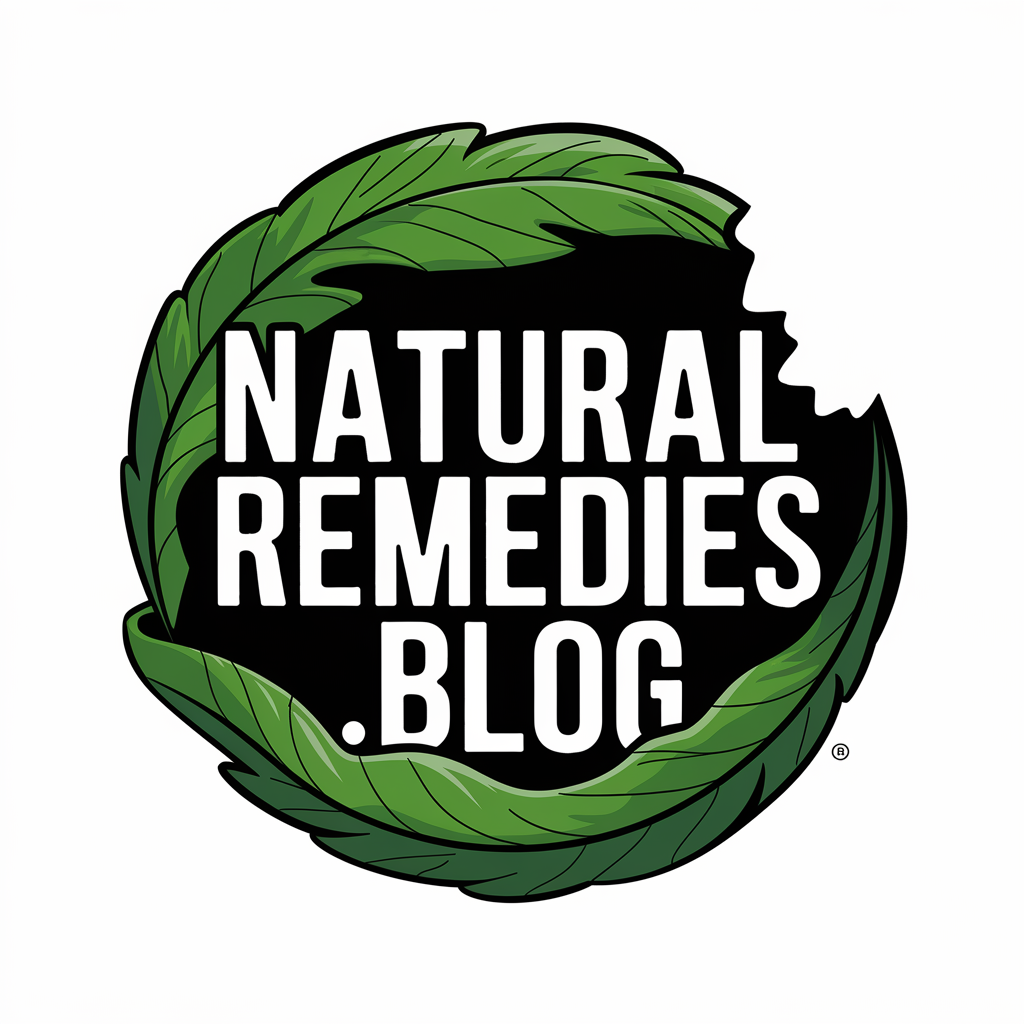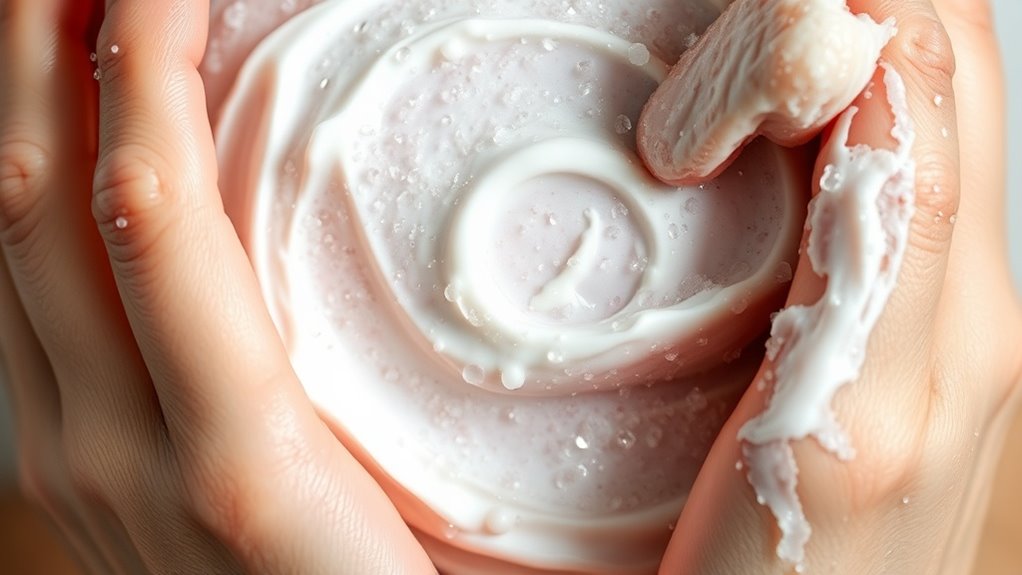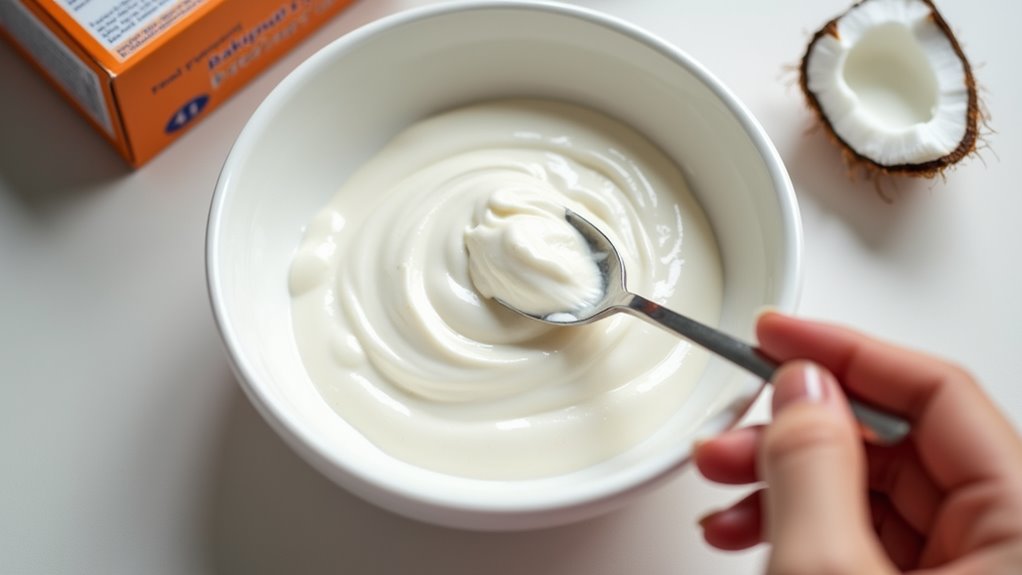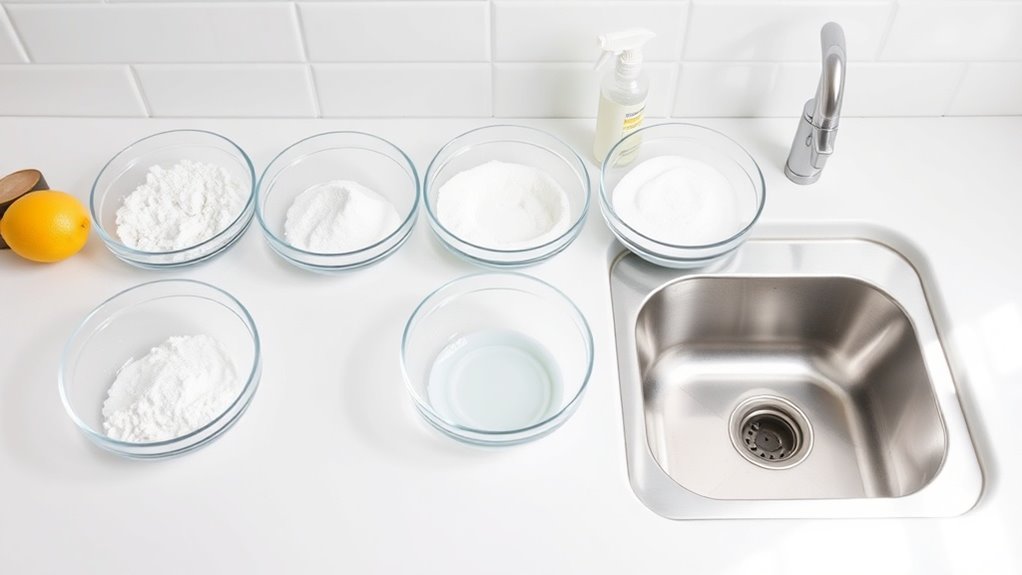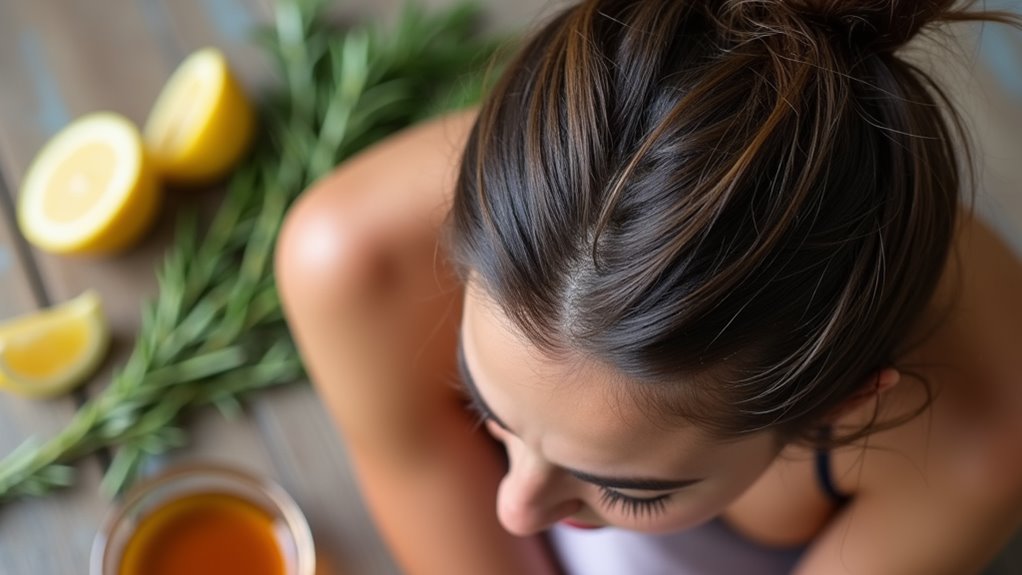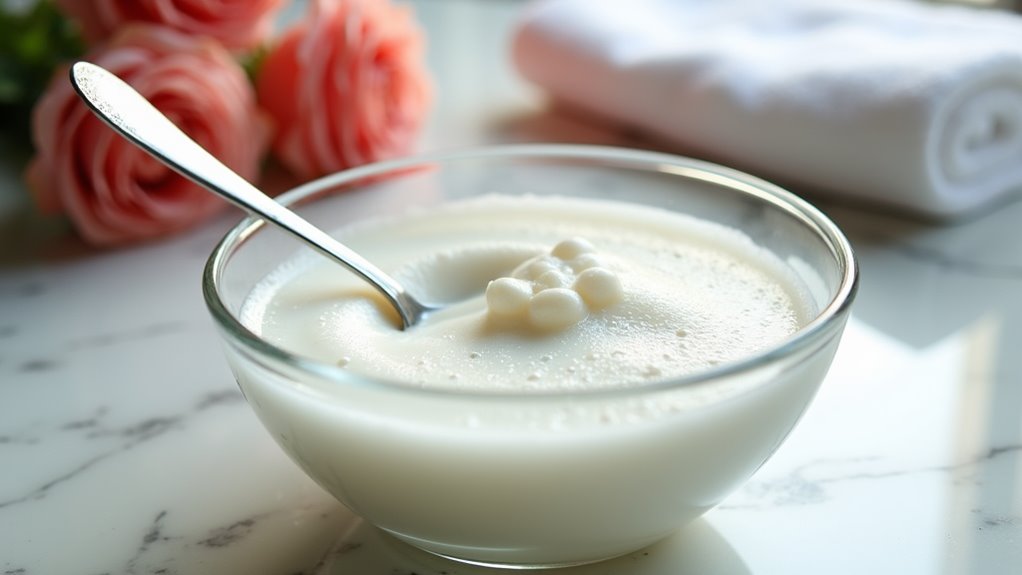How I Use Baking Soda to Exfoliate My Skin Safely
Understanding Baking Soda’s Exfoliating Properties
Baking soda’s fine, crystalline structure makes it an effective natural exfoliant for removing dead skin cells and surface debris.
Its mildly abrasive particles work by gently dislodging accumulated buildup while its alkaline pH helps dissolve excess oils and unclog pores.
When you create a baking soda face mask, you’ll notice its texture provides mechanical exfoliation as you massage it into your skin.
The compound’s natural antibacterial properties can help combat acne-causing bacteria, while its pH-balancing effects may temporarily neutralize acids on your skin’s surface.
However, you’ll need to use it carefully to avoid disrupting your skin’s natural barrier, as excessive use can lead to disruptions in pH balance.
Benefits and Risks of Using Baking Soda on Skin
While baking soda’s mild abrasive properties can help remove dead skin cells and neutralize skin pH levels, you’ll need to carefully monitor your skin’s response to this treatment. You might notice improved texture and clearer pores after use, but watch for signs of irritation such as redness, burning, or excessive dryness. Additionally, it’s crucial to conduct a patch test before widespread use to ensure your skin won’t react negatively. If you experience any adverse reactions, discontinue use immediately and consult a dermatologist.
Benefits For Skin Health
Although baking soda offers potential benefits for skin care, you’ll need to weigh these against significant risks before incorporating it into your routine.
When properly diluted and used sparingly, baking soda can provide several potential advantages:
- Acts as a gentle physical exfoliant to remove dead skin cells and unclog pores
- Helps balance skin pH levels temporarily, which may reduce acne-causing bacteria
- Contains anti-inflammatory properties that can calm minor skin irritations and redness
These benefits primarily stem from baking soda’s mild abrasive texture and alkaline nature.
However, long-term use can disrupt your skin’s natural protective barrier.
Watch These Warning Signs
Despite its potential benefits, using baking soda as a skin exfoliant requires careful attention to warning signs that could indicate adverse reactions.
Your skin’s natural pH balance can be disrupted by baking soda’s alkaline nature, causing various signs of irritation. Stop using baking soda immediately if you notice these symptoms:
| Warning Sign | Action Required |
|---|---|
| Redness/Burning | Apply cool compress |
| Dryness/Peeling | Use gentle moisturizer |
| Itching/Rash | Seek medical advice |
If irritation persists for more than 24 hours or you develop severe reactions like blistering or swelling, consult a dermatologist immediately.
My Pre-Exfoliation Skin Preparation Routine
Proper skin preparation is essential before applying any baking soda exfoliant. You’ll need to ensure your face is clean and ready to maximize the benefits while minimizing potential irritation.
-
Remove all makeup using your preferred makeup remover or micellar water, paying special attention to waterproof products around your eyes.
-
Cleanse your face thoroughly with a gentle, pH-balanced facial cleanser and lukewarm water to remove dirt, oil, and residue.
-
Pat your skin dry with a clean towel and wait 2-3 minutes to ensure your face isn’t too wet before applying the baking soda mixture. Additionally, make sure to identify your skin type to customize your exfoliant and ensure optimal results.
Creating the Perfect Baking Soda Mixture
Creating an effective baking soda exfoliant requires a precise ratio of one part baking soda to one part water, forming a smooth paste that isn’t too runny or too dry.
You’ll enhance the mixture’s benefits by incorporating natural additions like honey for moisture retention or lemon juice for brightening effects.
For sensitive skin, you can dilute the mixture further with water or combine it with soothing ingredients like aloe vera gel to reduce potential irritation. It’s essential to remember that baking soda’s alkaline nature can disrupt the skin’s acid mantle, potentially leading to irritation if not used cautiously.
Proper Mixing Ratios
Finding the right consistency for your baking soda scrub requires precise measurements and careful mixing. The proper ratio balances gentle exfoliation with skin sensitivity to prevent irritation or micro-tears.
For optimal results, follow these proven mixing ratios:
- Sensitive skin: Mix 1 part baking soda with 3 parts water to create a thin, milky consistency.
- Normal skin: Combine 1 part baking soda with 2 parts water for a moderate paste.
- Oily/thick skin: Use 1 part baking soda with 1 part water to form a thicker scrub.
Test the mixture on your wrist before applying it to your face.
Adding Natural Enhancement Ingredients
While the basic baking soda mixture provides effective exfoliation, you can enhance its benefits by incorporating natural ingredients that target specific skin concerns.
Add a few drops of tea tree oil to combat acne and reduce inflammation.
For dry skin, mix in raw honey or vitamin E oil to boost moisture retention.
If you’re dealing with hyperpigmentation, incorporate fresh lemon juice or apple cider vinegar.
To soothe sensitive skin, blend in colloidal oatmeal or aloe vera gel.
For aging concerns, add coconut oil or rosehip oil to promote elasticity and reduce fine lines.
Step-by-Step Application Method
The application of baking soda as an exfoliant requires careful preparation and precise technique to achieve optimal results. Mix one tablespoon of baking soda with enough water to create a smooth paste that’s neither too thick nor too runny.
-
Cleanse your face thoroughly with warm water and pat it until it’s slightly damp.
-
Apply the paste in gentle circular motions, focusing on problem areas while avoiding the delicate eye area.
-
Maintain the circular motion for 30 seconds, then rinse thoroughly with cool water and apply your preferred moisturizer. Remember to limit the duration of the mask to 5-10 minutes to prevent potential irritation.
For sensitive skin, reduce application time to 15 seconds and exfoliate only once weekly.
Post-Exfoliation Skincare Tips
Since baking soda can temporarily disrupt your skin’s natural pH balance, proper post-exfoliation care becomes essential for maintaining healthy skin.
Immediately apply a pH-balancing toner to restore your skin’s acid mantle. Follow with a gentle, fragrance-free moisturizer to replenish hydration. Don’t skip sunscreen, as freshly exfoliated skin is more sensitive to UV damage.
For the next 24 hours, avoid harsh skincare products, including retinoids, acids, or vitamin C serums.
If you experience redness or irritation, apply aloe vera gel or a calming face mask. Wait at least 3-4 days before your next exfoliation session.
Recommended Frequency and Best Practices
Understanding proper timing between exfoliation sessions leads to optimal skin health and minimizes irritation risks. Start with once per week, then gradually increase frequency based on your skin’s response.
-
Don’t exfoliate more than 2-3 times weekly, even for oily skin types.
-
Wait at least 48 hours between sessions to allow skin barrier recovery.
-
Reduce frequency if you notice redness, sensitivity, or excessive dryness.
Apply gentle pressure and limit scrubbing to 30 seconds.
Always perform a patch test before full application, and don’t exfoliate if you have active breakouts, sunburn, or broken skin.
Alternative Natural Exfoliants to Consider
While baking soda offers effective exfoliation, several natural alternatives can provide similar benefits with varying levels of gentleness. You’ll find these options particularly suitable if you have sensitive skin or want to rotate between different exfoliants.
| Ingredient | Benefits | Best For |
|---|---|---|
| Ground Oats | Gentle, soothing | Sensitive skin |
| Coffee grounds | Antioxidant-rich | Cellulite areas |
| Sugar | Dissolves easily | Body scrubs |
Choose ingredients based on your skin’s needs and sensitivity level. Oats work well for daily use, while coffee grounds provide deeper exfoliation twice weekly. Sugar’s granules gradually soften during use, making it ideal for customizable scrubs.
